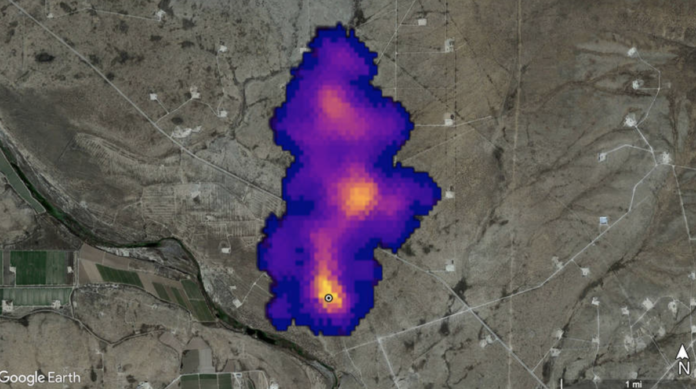Some effective detective work has been done in tracking down some of the worst-offending climate polluters – from 200 miles above Earth.More than 50 ‘super-emitters’ of methane were discovered by Nasa scientists during a mission on the International Space Station in July.Dozens of methane-spewing hubs were located in Central Asia, the Middle East, and the Southwestern United States. Methane hotspots are typically caused by oil, gas and coal facilities and infrastructure along with landfills and agriculture.Methane is a highly potent greenhouse gas which has more than 80 times the heating power of the more prevalent carbon dioxide (CO2) over the first 20 years after it reaches the atmosphere. On the upside, while CO2 can hang around in the atmosphere for centuries, methane lasts around a decade meaning that slashing its emissions can have a dramatic effect in a shorter period of time. To this end, 100 countries pledged to slash methane emissions 30 per cent by 2030 at Cop26, including the United States.The methane findings weren’t even the primary focus of Nasa’s Earth Surface Mineral Dust Source Investigation (EMIT) which was mapping minerals in desert regions to understand how airborne dust has an effect on climate.’Some of the plumes EMIT detected are among the largest ever seen – unlike anything that has ever been observed from space,’ said Andrew Thorpe, a research technologist at JPL leading the EMIT methane effort. ‘What we’ve found in a just a short time already exceeds our expectations.’For example, the Nasa instrument detected a plume about two miles long southeast of Carlsbad, New Mexico, in the Permian Basin, one of the largest oilfields in the world.In Turkmenistan, EMIT identified 12 plumes from oil and gas infrastructure east of the Caspian Sea port city of Hazar, with some plumes stretching more than 20 miles.The team also identified a methane plume south of Tehran, Iran, at least three miles long, from a major waste-processing complex.Nasa plans to continue using its space station vantage point to track major emitters.’Reining in methane emissions is key to limiting global warming. This exciting new development will not only help researchers better pinpoint where methane leaks are coming from, but also provide insight on how they can be addressed – quickly,’ NASA Administrator Bill Nelson said.
Nasa plays detective in tracking down Earth’s super methane polluters
Sourceindependent.co.uk
RELATED ARTICLES


